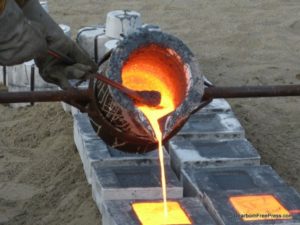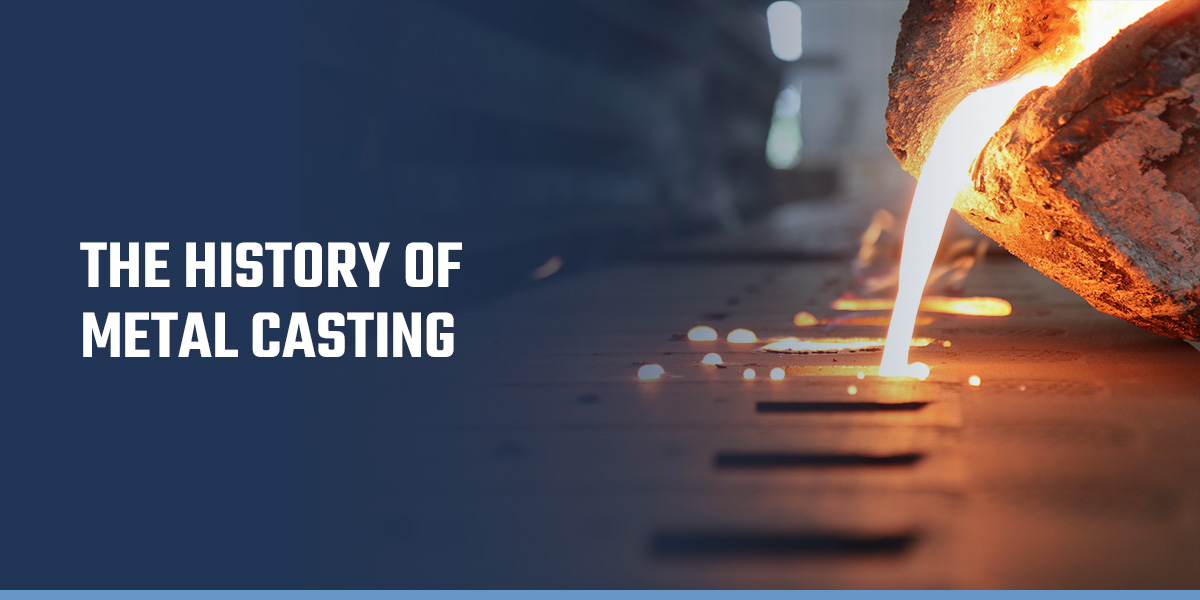The Role of Metal Casting in Advancing Manufacturing Technologies
Metal Casting have actually notably affected the evolution of manufacturing technologies. They use one-of-a-kind layout adaptability, enabling the development of detailed geometries crucial for different applications. Modern casting methods are being boosted by innovations like 3D printing and automation. These advancements not just boost efficiency however additionally address difficulties in accuracy and sustainability. As sectors continue to evolve, the function of Metal Casting continues to be essential fit their future. What lies in advance in this vibrant field?
The Evolution of Steel Casting Techniques
As the need for accuracy and efficiency in manufacturing has grown, the development of Metal Casting methods has gone through considerable change. Historically, Metal Casting started with basic methods such as sand spreading and lost-wax casting, which enabled artisans to develop complex forms. In time, improvements in technology introduced procedures like die spreading and investment casting, improving accuracy and lowering waste. Aluminum Castings. The intro of computer-aided layout (CAD) and simulation software program reinvented the drawing board, making it possible for makers to prepare for potential concerns and enhance designs prior to production. Additionally, the growth of brand-new materials, such as sophisticated alloys and compounds, has broadened the extent of applications for Metal Casting. Automation and robotics have further polished casting procedures, enhancing consistency and effectiveness. Consequently, the Metal Casting industry has actually adjusted to satisfy the requirements of modern-day manufacturing, focusing on sustainability and development to stay competitive in an ever-evolving marketplace
Applications of Metal Casting in Secret Industries
The improvements in Metal Casting techniques have opened up a large variety of applications throughout numerous markets. In the vehicle sector, Metal Casting are integral for creating engine blocks, transmission real estates, and other important elements that call for high stamina and durability. The aerospace sector makes use of castings for elaborate components like turbine blades and architectural parts, ensuring lightweight yet durable options for airplane.

Moreover, the building market utilizes Metal Casting for architectural components such as fittings and beams, contributing to the stability of structures and infrastructure. In the power market, spreadings play a crucial role in manufacturing parts for wind turbines and power generation equipment, improving effectiveness and dependability. Furthermore, the medical field gain from accuracy castings used in surgical tools and prosthetics, demonstrating the adaptability of Metal Casting throughout diverse applications. This wide use underscores the significance of Metal Casting in modern-day manufacturing practices.
Advantages of Metal Casting in Modern Production
Metal Casting provide numerous benefits that considerably improve modern-day manufacturing processes. One crucial advantage is design versatility; Metal Casting permits for the development of intricate shapes and elaborate geometries that are usually hard or difficult to attain with other making techniques. This capacity allows producers to optimize item layouts for capability and performance.
In addition, Metal Casting can sustain a wide variety of materials, including aluminum, steel, and iron, which can be tailored to satisfy specific mechanical residential properties and deterioration resistance demands.

Cost-effectiveness is another notable benefit; Metal Casting processes can produce large quantities of parts with minimal product waste, consequently reducing production costs.
Furthermore, the longevity of actors steel elements contributes to the long life of products, reducing the demand for frequent substitutes. Generally, the benefits of Metal Casting significantly add to efficiency, sustainability, and advancement within modern-day manufacturing environments.
Technologies Driving the Future of Metal Casting
While standard Metal Casting methods have served the sector well for decades, recent advancements are positioned to change the area. Advances such as 3D printing innovation permit rapid prototyping and the production of complex geometries that were previously unattainable. These technologies not only enhance style flexibility however additionally decrease waste and reduce lead times. In enhancement, the integration of automation and robotics in casting processes is simplifying operations, enhancing precision, and improving employee safety and security. The growth of new alloys and composite materials is allowing the development of more powerful, lighter spreadings customized for certain applications. Digital technologies, including expert system and equipment understanding, are maximizing spreading specifications and anticipating upkeep, driving better quality assurance. Collectively, these advancements read what he said are pressing the boundaries of Metal Casting, cultivating greater effectiveness and sustainability in manufacturing, and positioning the market for future growth and competitiveness.
Difficulties and Solutions in Metal Casting Processes
As improvements in Metal Casting modern technology proceed to reshape the sector, various challenges continue to be that makers need to address to totally take advantage of these innovations. One substantial concern is the variability in material residential properties, which can cause inconsistent top quality and performance. This irregularity commonly results from variations in resources and processing problems. Furthermore, the increasing costs of power and products present financial constraints, pressing producers to seek more effective processes.
To battle these challenges, companies are significantly adopting automated systems and advanced simulation strategies to enhance precision and uniformity. Implementing top quality control procedures throughout the manufacturing procedure additionally assists in discovering defects early. Moreover, buying research for different products may lower prices and enhance sustainability. By attending to these challenges with innovative services, the Metal Casting sector can boost productivity and preserve competition in the progressing manufacturing landscape.
Frequently Asked Concerns
What Products Are Frequently Made Use Of in Steel Casting Procedures?
Usual products utilized in Metal Casting procedures consist of light weight aluminum, bronze, iron, and magnesium. Each material possesses one-of-a-kind buildings that accommodate different applications, improving the adaptability and performance of the final cast products in numerous sectors.
Just How Do Ecological Rules Effect Metal Casting Workflow?
Ecological guidelines force Metal published here Casting procedures to take on cleaner technologies and practices, usually boosting production costs. Conformity might bring about ingenious processes that lower waste and emissions, ultimately advertising sustainability within the Metal Casting sector.
What Are the Precaution in Metal Casting Facilities?
Safety steps in Metal Casting centers include proper air flow, personal protective equipment, regular safety training, equipment maintenance, and adherence to safety and security guidelines, making certain a safe and secure setting for employees while decreasing threats connected with dangerous materials and procedures.
Exactly How Is High quality Controlled in the Metal Casting Refine?
Quality control in Metal Casting entails rigorous assessments, including aesthetic analyses, dimensional checks, and material testing. Adherence to industry standards and carrying out top quality monitoring systems guarantees that castings satisfy specific requirements throughout the manufacturing procedure.
What Is the Future Work Outlook for Metal Casting Professionals?
The future work outlook for Metal Casting professionals appears promising, driven by developments in innovation and boosting need throughout numerous sectors (Wisconsin Aluminum Foundry). Development in automation and lasting methods will likely produce new chances in this industry
Historically, Metal Casting began with simple methods such as sand spreading and lost-wax spreading, which enabled artisans to produce intricate forms. Over time, improvements in technology presented procedures like die casting and investment spreading, enhancing accuracy and lowering waste. In addition, the medical field benefits from precision castings used in medical instruments and prosthetics, demonstrating the right here flexibility of Metal Casting across varied applications. Metal Casting use countless benefits that substantially boost modern-day production processes. Typical materials made use of in Metal Casting processes consist of light weight aluminum, bronze, iron, and magnesium.